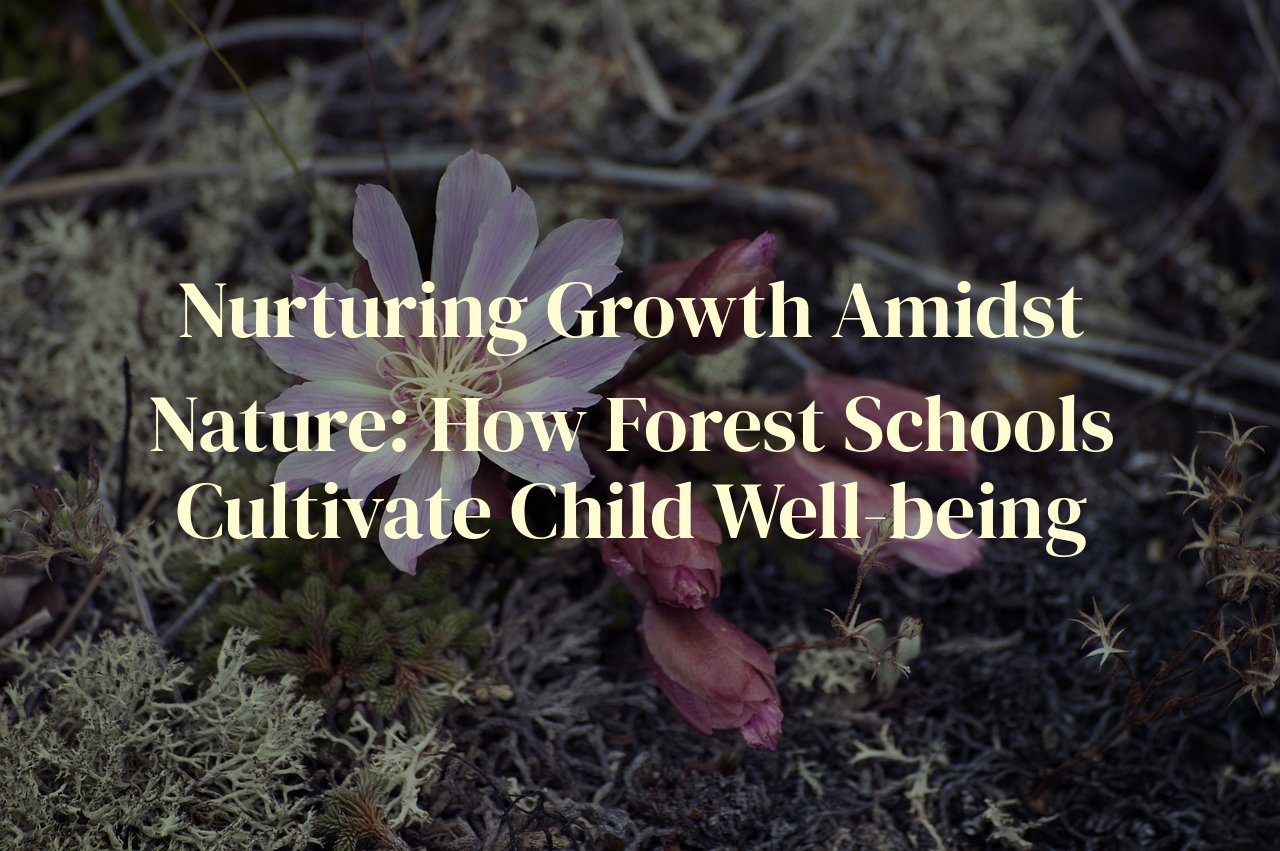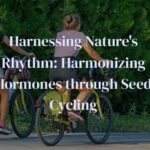
Immersing ourselves in the embrace of nature, we often discover the unconventional paths that lead to holistic wellness and education. In this exploration, we find ourselves delving into a unique paradigm where the verdant classroom and child development intertwine, revealing the emergence of Forest Schools—an innovative concept prioritizing health and growth in sync with nature’s rhythms and teachings. This post will shed light on the essence of Forest Schools and unveil their profound influence on child health and development, transforming our understanding of traditional education’s role in nurturing young minds and bodies.
Every reader seeking a fresh perspective on child growth or contemplating alternative educational approaches will encounter valuable insights here. You’ll learn about how these naturalistic classrooms operate, their impact on physical health, social skills, and psychological resilience, alongside practical takeaways for integrating these principles into your child’s life—whether they attend a Forest School or not.
Table of Contents
The Roots of Forest School Philosophy: Laying the Foundation for Alternative Education
The idea of Forest Schools might seem like a new trend, but its roots are deeply entwined with centuries-old beliefs in the significance of nature’s role in human development. As a health-centric writer, I’ve been enchanted by this approach, noticing its harmonious blend of education, well-being, and ecology. The foundation of Forest School philosophy rests upon a few core principles that collectively offer a transformative alternative to traditional classroom settings.
Firstly, there is the principle of ‘child-led learning’, which underpins the Forest School ethos. This aspect revolves around the belief that children, when given autonomy, develop more effectively, pursuing their interests and curiosities which leads to a more personalized and meaningful educational experience. I recall observing a young child utterly captivated by the task of building a shelter from fallen branches – a simple act, yet so profound in its developmental implications.
Another pillar is the ‘risk-taking’ element, where Forest Schools promote the idea that encountering and managing risk is a crucial part of learning. The controlled risks taken in Forest School activities, such as climbing trees or using tools to craft wood, are not seen as hazards, but as opportunities for growth that can enhance self-confidence and judgment.
Furthermore, the emphasis on ‘outdoor skills and environmental stewardship’ stands out. Children learn about the flora and fauna surrounding them, fostering a deep respect for nature. Early exposure to the wonders of the environment can instill life-long values of conservation and sustainability. It’s delightful to see the gentle way in which children begin to cherish and care for their natural classrooms.
‘Community and collaboration’ also thrive in these natural settings. The communal aspect of a Forest School encourages social skills and emotional intelligence. Children become parts of a micro-society, working together and supporting each other. There is something heartfelt about the bonds formed over shared outdoor experiences.
Lastly, the ‘holistic approach to health’ intrinsic to the Forest School philosophy aligns with my personal and professional values. Physical activity is seamlessly integrated into the day as children move around the forest setting, while the mental and emotional benefits of being in nature are well-documented. As a proponent of dietary therapy, I believe equally in nature’s therapeutic properties, as does the Forest School model, nurturing not just the mind, but the body and spirit of each child.
Cultivating Bodily Health Through Nature’s Playground: The Physical Benefits of Forest Learning
Picture a classroom without walls, where the carpeted floors are replaced by the earth’s natural bedding, and the ceiling is a tapestry of green, dappling sunlight across children’s faces. This is where my journey intertwining health and forest schooling takes root. Through personal experiences and witnessing children blossom, I’ve come to understand that nature’s playground is more than just an open space; it’s a wellspring of physical health benefits for growing young bodies.
First, the textured terrain of a forest challenges children’s balance and coordination in a way that flat, artificial play spaces can’t replicate. Scampering over logs, weaving through trees, and navigating the uneven ground, they develop gross motor skills and dexterity. Each step in a forest is a conversation with gravity and an exercise in spatial awareness.
Moreover, the sheer range of movements children engage in outdoors is staggering. From climbing to jumping, they’re not only burning calories and building muscle but also fostering a relationship with physical fitness that’s joyful and self-directed. Unlike the rigid structure of organized sports or gym classes, forest learning embodies the freedom to explore movement in its purest form.
Then, there’s the air – dewy and rich with the breath of plants. Sifting through leaves and playing amidst flora, children inhale a cleaner quality of air, which can reduce the prevalence of respiratory conditions that are exacerbated by indoor air pollution. The fresh air is a quiet hero, bolstering lung function and invigorating the entire body with each breath.
It’s not just the acts of running and playing that refine physical health, but also the subtle interactions. The tactile experience of soil, bark, and water stimulates sensory processing. Kids grow more attuned to their bodies and the environment simultaneously, which is crucial for healthy development.
The physical benefits of forest learning intertwine like vines, creating a robust framework for bodily health. I’ve seen children evolve from tentative to confidently adventurous under the canopy’s care. And it’s this transformation, this burgeoning of strength and well-being, that cements my belief in the power of forest schools as a bastion of health and vitality for our youngest generation.
Branching Out Socially and Emotionally: Child Development in the Wild
As a staunch proponent of forest school philosophy, I’ve observed firsthand how nature becomes a social and emotional classroom for children. The melodies of birds replace the buzz of electronics, and the rustling leaves dance to the symphony of youthful laughter. In this untamed setting, children learn to navigate the complexities of social interactions within a framework far removed from the confinement of traditional classrooms.
One might wonder, how does the wild foster social skills? It’s the art of teamwork and collaboration that takes center stage here. Engaging in tasks like building a shelter or foraging for nature’s offerings necessitates communication, sharing ideas, and supporting each other. Without realizing it, these young minds are mastering the critical life skills of cooperation and empathy.
Emotionally, the forest floor becomes a canvas where children paint their resilience. Little setbacks, like an unsuccessful attempt to climb a tree, teach them about courage and perseverance. The vibrant ecosystem around them serves as a constant reminder that challenges are natural, and overcoming them is part of growth.
Moreover, the wild encourages inclusivity. In my experience, the forest does not discriminate; it invites all children to play, explore, and create memories. Watching a child who is often sidelines in traditional playgrounds rise to the occasion as a leader in a forest setting is a testament to this inclusive and nurturing environment.
Lastly, children in forest schools are exposed to a spectrum of emotions that nature elicits – awe at the sight of a deer, patience in waiting for a caterpillar to emerge from its cocoon, or joy at the triumph of lighting the first campfire. Within these forest walls, emotions are felt deeply, shared openly, and become the roots of a strong social and emotional foundation.
Resilience and Mental Health: Nourishing Young Minds with Fresh Air and Freedom
The concept of resilience within the context of forest schools is nothing short of transformational. In my own jaunts through nature’s classroom, the visible impact on children’s mental health is palpable. The unstructured play in forests supports the development of resilience by presenting both physical and emotional challenges in a nurturing environment. A climb up a knotty tree under the vigilant eye of a watchful instructor can teach a powerful lesson in perseverance and self-trust.
Moreover, the freedom offered by forest schools to explore and interact with nature at their own pace is a gift to young minds often constrained in traditional classroom settings. This autonomy not only feeds their curiosity, but also reinforces their ability to manage personal fears and uncertainties. Witnessing a child navigate the interpersonal dynamics among peers outdoors, far from the confines of four walls, is to watch the flowering of empathy and confidence.
Indeed, the fresh air and freedom are more than just physical entities. They are ingredients in a potent recipe for positive mental health. The sounds of the forest, the texture of the bark, the smell of the pine — all of these sensory experiences ground children in the present moment. It’s a form of mindfulness that can alleviate symptoms of ADHD or anxiety. Such natural stimuli serve as a therapy, with each outdoor excursion acting as a session where children can cast away their stress, aligning their natural rhythm with that of the environment around them.
It’s this gentle yet profound interaction with nature that underpins a robust mental health framework for children. The forest is a sanctuary where young souls learn to interpret life’s setbacks as much as its beauties, enabling them to weave a strong mental tapestry capable of withstanding life’s unpredictable patterns.
I often reflect on a particular instance where a once timid and reserved child transformed before my eyes, as the nurturing embrace of nature gave him the strength to voice his ideas and assert himself. This metamorphosis is the true essence of a forest school’s impact on mental health and resilience. Not only does it reveal the latent potentials within, but it also frames an indomitable spirit that they carry beyond the whispering trees into the broader expanse of their lives.
From Theory to Practice: Incorporating Forest School Concepts into Daily Family Routines
Translating the ethos of forest schools into daily life can be a rejuvenating experience for the entire family. It's not just about outdoor activities; it's about imbibing values that promote growth, health, and connectivity to nature. As someone who has seen the transformative effects of nature-oriented education, I’ve integrated these principles within my own family routines in meaningful ways.
For starters, we begin each day with what I like to call a 'green start'. This involves a short morning walk, where each family member discusses what they’re grateful for. It's astonishing how a simple practice amidst the dewy air can set a serene tone for the day. It reinforces mindfulness—a core tenet of forest school philosophy.
Mealtime, too, becomes an expression of forest school values. We focus on plant-based, whole foods, celebrating the bounty of nature while discussing the origins of our meals—whether it’s the vegetables from our backyard or produce from local farms. It’s a wonderful way to inculcate appreciation and knowledge of natural food cycles in children.
Weekends are reserved for what we like to call 'Adventure Day.' Much like a typical day at a forest school, we dedicate time to explore local parks or nature reserves, engaging in unstructured play. It resembles natural learning environments where discovery and curiosity are encouraged.
In the evenings, our family unwinds by sharing stories or reading books that emphasize nature, adventure, and the beauty of the living world. Such narratives inspire conversations about ecology, wildlife, and conservation, subtly instilling respect for the environment.
Lastly, we integrate aspects of risk and resilience by encouraging tree climbing, gardening, or even simple bug observation in our yard. These activities challenge physical abilities and develop problem-solving skills in a playful, low-stakes environment. It's about bringing that freedom and adaptability of outdoor learning right back into our home.
Blending the forest school concepts into our daily life has been enriching, serving as a constant reminder that education isn’t confined to the four walls of a classroom but thrives in the boundless classroom of life.
Conclusion
In the dance of sunlight through leaves and the whisper of wind through trees, Forest Schools offer a gentle yet potent revolution in the story of child development. As our journey into this verdant educational model concludes, we come away with an awareness of how returning to our roots can empower the growth of our youngest pioneers. With the knowledge of both the philosophy and tangible benefits these schools deliver, may we foster a future generation thriving in health, wisdom, and a deep-seated harmony with the natural world around them.



